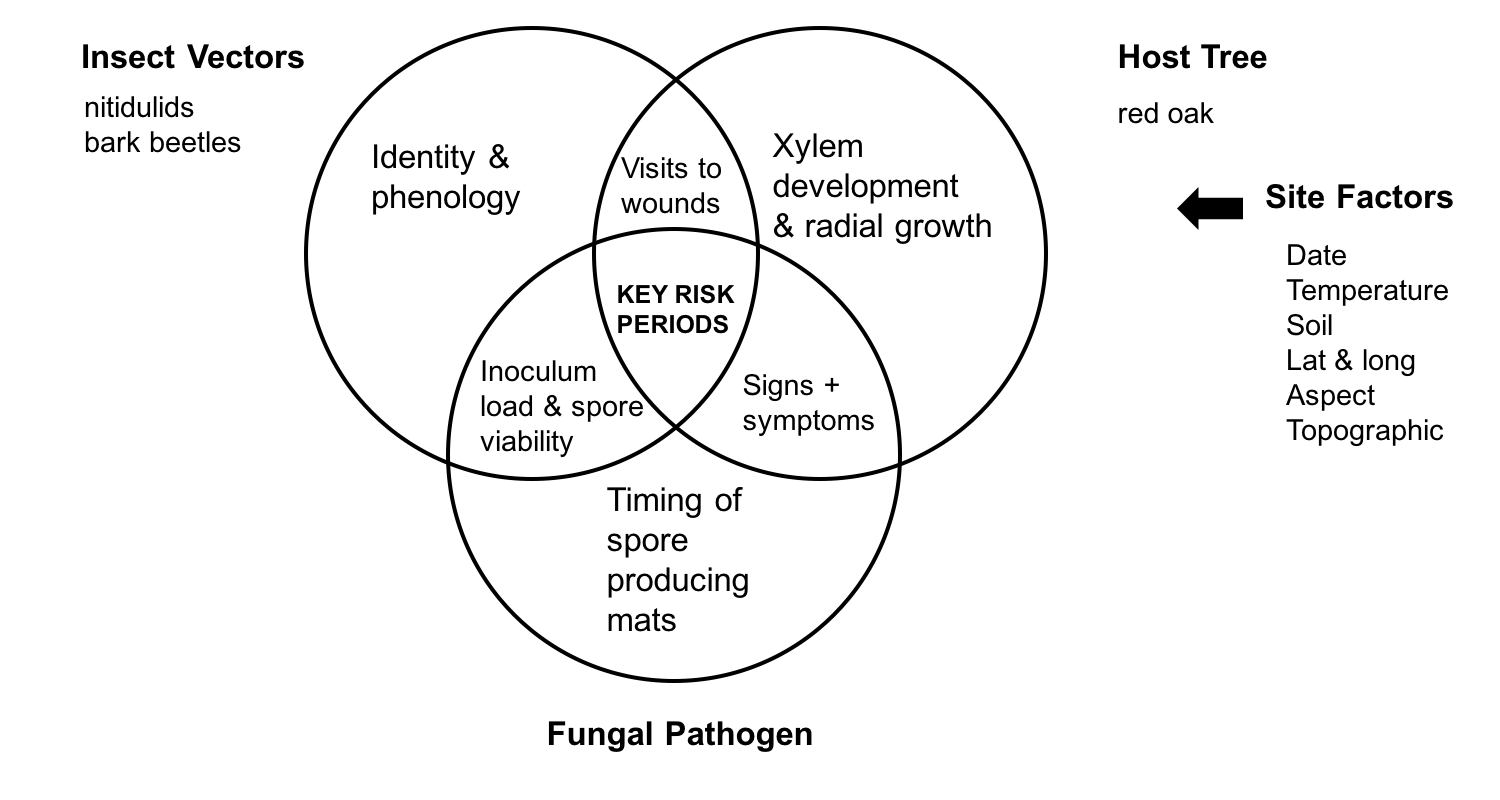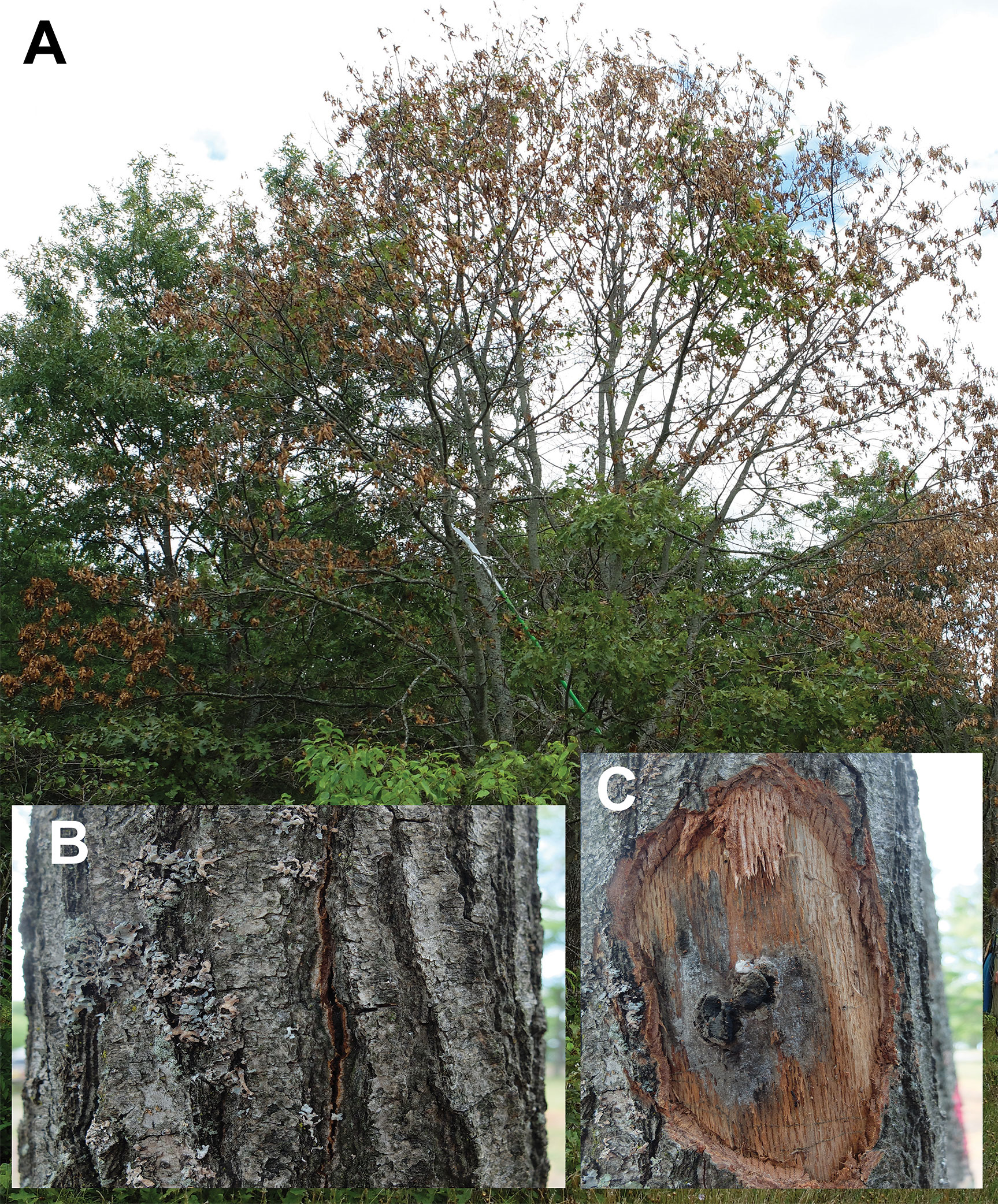We seek to refine Michigan-specific Oak Wilt control and detection measures designed to reduce spread and improve detection confidence and speed. This includes identifying key high-risk periods of insect vector activity, fungal spore production and host tree susceptibility, and evaluating molecular methods for identification and source of spread. With the ultimate goal of minimizing OW spread and the loss of Michigan oak resources by evaluating and distributing clear, consistent and science-based messages to educate all industries involved with tree-related work, and for the public at large.
Bretziella fagacearum*, the fungal pathogen that causes the disease Oak Wilt (OW) (Fig. 1), is responsible for the widespread decline of oaks across the United States (24 states; 829 counties) (1). It is particularly devastating to trees in the red oak group, which can succumb to this disease within four weeks of infection. Spread of this disease is rapid and occurs on multiple fronts from root-to-root transmission, insect transmission, and sporadic long-range infections due to movement of firewood (1). Long-range spread is difficult to predict but most recently was linked increasing the north eastern limit of C. fagacearum by 300km (2). Radial transmission of OW foci in Michigan (MI) can occur up to 12 m/year (1). The decline of oaks is an aesthetic blight across the landscape and also causes devastating ecosystem damage (3). There is no natural resistance to this disease in the red oak group and thus the only means of preserving these valuable trees is to mitigate the spread of OW to new locations and reduce inoculum load in known OW positive locations. This is particularly relevant to activities that result in tree wounding or movement (pruning, harvesting, thinning, utility line clearance, and firewood).
*The fungus that causes oak wilt has been taxonomically re-classified and has been placed into a new genus and is now known as Bretziella fagacearum (Bretz) Z.W.deBeer, Marinc., T.A.Duong & M.J.Wingf., previously it was called Ceratocystis fagacearum (4).
1. Juzwik, J, Appel, DN, MacDonald, WL and Burks S. 2011. Challenges and successes in managing oak wilt in the United States. Plant Dis. 95(8): 888-900.
2. Jensen-Tracy, S, Kenaley, S, Hudler, G, Harrington, T, and Logue, C. 2009. First report of the oak wilt fungus, Ceratocystis fagacearum, in New York State. Plant Dis. 93:428.
3. Appel, DN. 1995. The oak wilt enigma: perspectives from the Texas epidemic. Annual Review of Phytopath. 33: 132-139.
4. de Beer, Z. W., Marincowitz, S., Duong, T. A., and Wingfield, M. J. 2017. Bretziella, a new genus to accommodate the oak wilt fungus, Ceratocystis fagacearum (Microascales, Ascomycota). MycoKeys. 27:1–19

